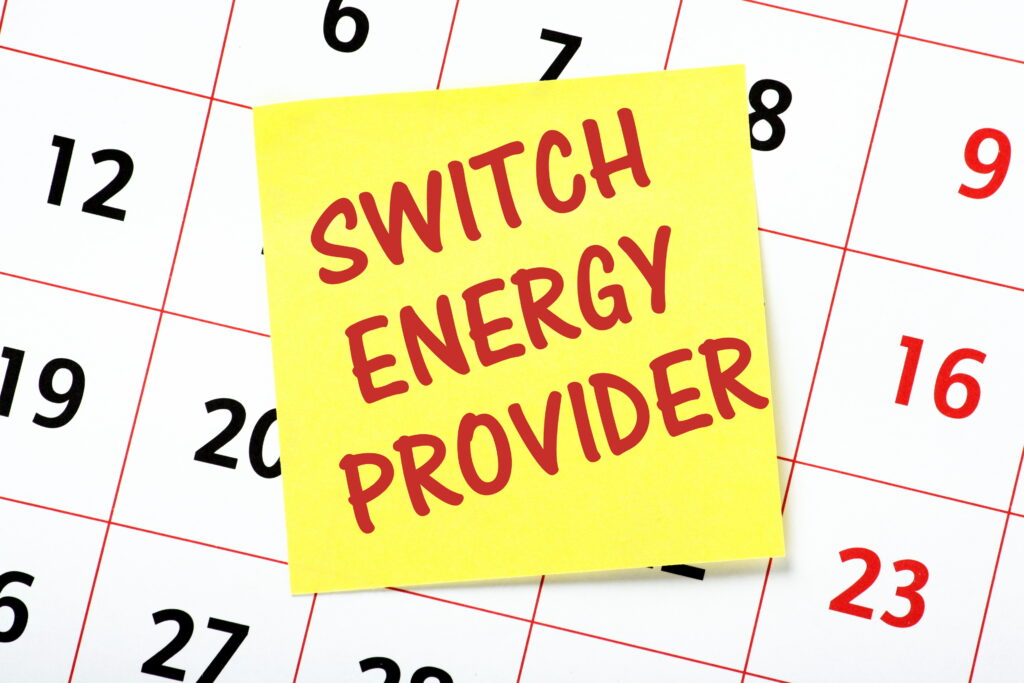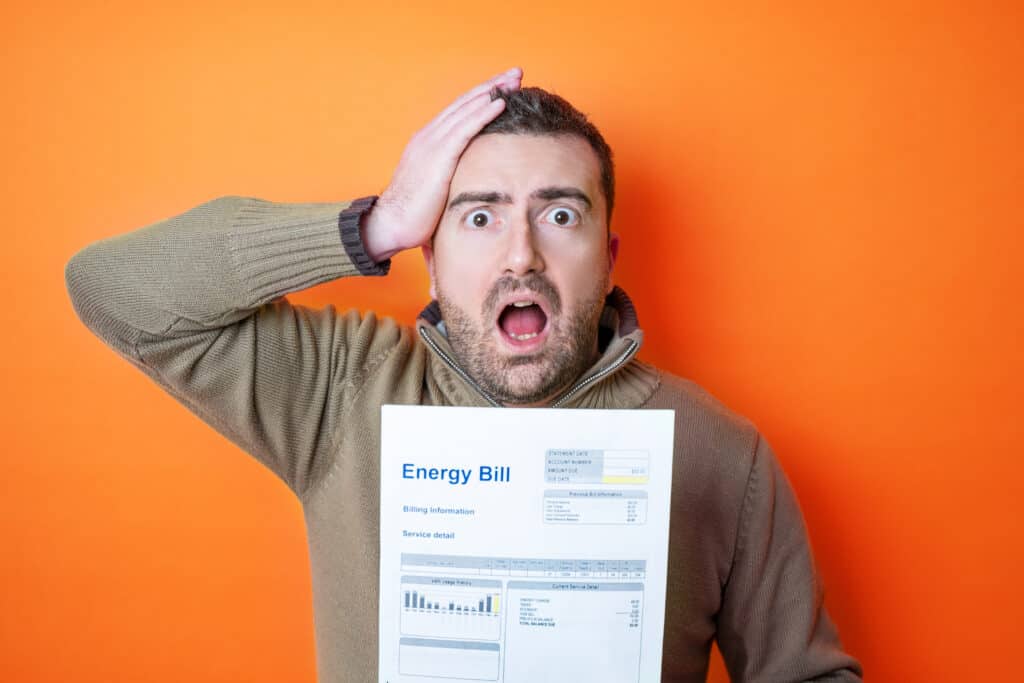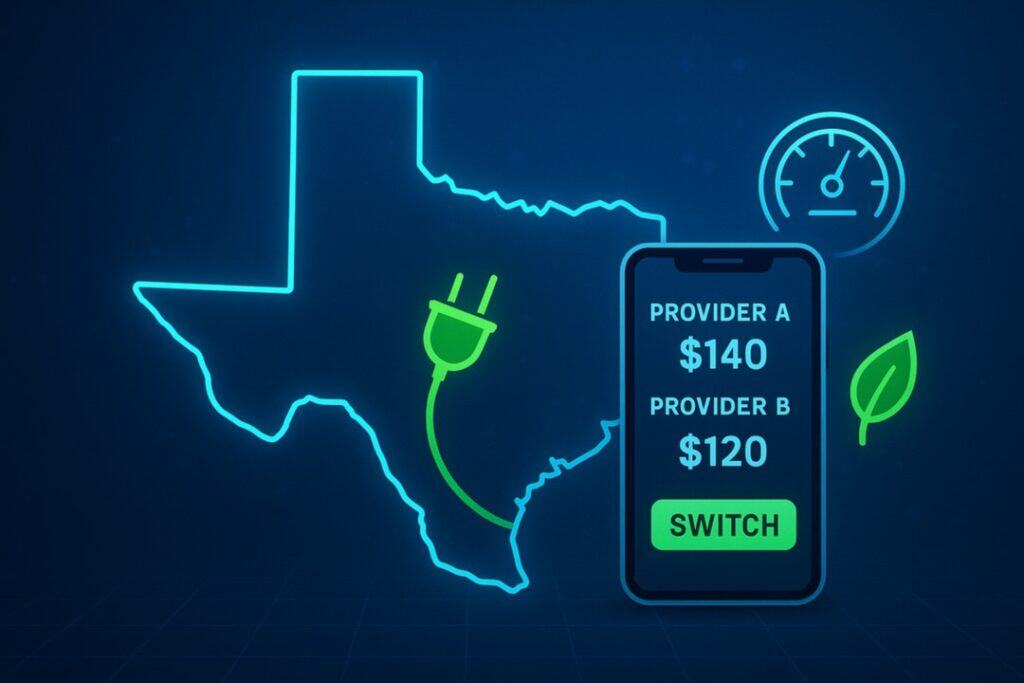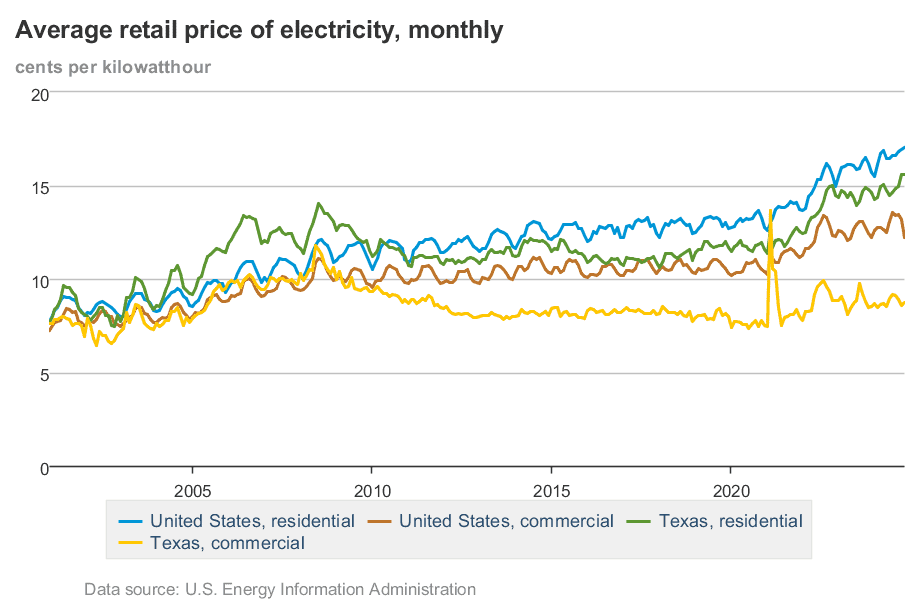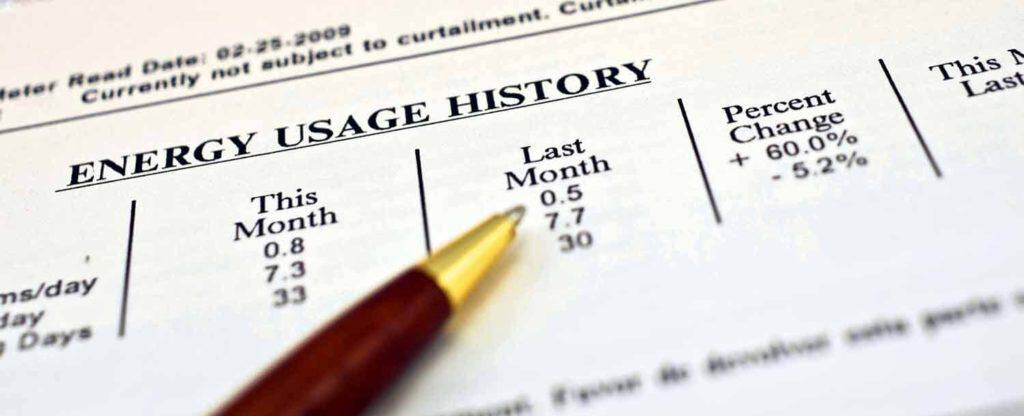Any product or company names, marks, or logos shown on this page are the property of their respective owners. Compare Power is an unaffiliated, independent marketplace. Get unbiased, accurate information backed by our commitment to editorial integrity.
Understanding Costs and Factors
Electricity rates vary significantly across the United States, with the national average currently at 17.47 ¢/kWh as of November 2025, according to the U.S. Energy Information Administration (EIA).
This analysis breaks down the latest state-by-state figures, revealing where power comes cheap and where it commands a premium.
Table of Contents
Cheapest and Most Expensive States
The cost of electricity can fluctuate wildly depending on where you live. Here’s a snapshot of the extremes.
Most Affordable States for Residential Customers
- North Dakota: 11.33¢/kWh
- Utah: 11.07¢/kWh
- Idaho: 11.45¢/kWh
- Nebraska: 11.85¢/kWh
- Washington: 11.84¢/kWh
Most Affordable States for Businesses
- North Dakota: 7.23¢/kWh
- Oklahoma: 8.14¢/kWh
- Utah: 8.29¢/kWh
- Texas: 8.80¢/kWh
- Arkansas: 10.20¢/kWh
Most Expensive States for Residential Customers
- Hawaii: 45.19¢/kWh
- California: 34.26¢/kWh
- Connecticut: 29.58¢/kWh
- Massachusetts: 29.50¢/kWh
- Rhode Island: 27.93¢/kWh
Most Expensive States for Businesses
- Hawaii: 40.82¢/kWh
- California: 22.86¢/kWh
- Alaska: 21.64¢/kWh
- Massachusetts: 19.76¢/kWh
- Connecticut: 20.82¢/kWh
Electricity Rates by State Ranked
Based on the latest data from the U.S. Energy Information Administration (EIA), here are the average residential electricity rates by state as of November 2025, in cents per kilowatt-hour (kWh).
| Rank | State | Residential Rate (¢/kWh) | % Diff from National Avg | Commercial Rate (¢/kWh) | % Diff from National Avg | Regulated or Deregulated |
|---|---|---|---|---|---|---|
| 1 | Hawaii | 45.19 | +167.7% | 40.82 | +222.4% | Regulated |
| 2 | California | 34.26 | +103.0% | 22.86 | +80.6% | Deregulated |
| 3 | Connecticut | 29.58 | +75.2% | 20.82 | +64.5% | Deregulated |
| 4 | Massachusetts | 29.50 | +74.8% | 19.76 | +56.1% | Deregulated |
| 5 | Rhode Island | 27.93 | +65.5% | 19.13 | +51.1% | Deregulated |
| 6 | Alaska | 24.89 | +47.5% | 21.64 | +70.9% | Regulated |
| 7 | New Hampshire | 23.00 | +36.3% | 19.25 | +52.1% | Deregulated |
| 8 | New York | 22.97 | +36.1% | 17.56 | +38.7% | Deregulated |
| 9 | Vermont | 21.85 | +29.4% | 18.65 | +47.3% | Regulated |
| 10 | Maine | 20.47 | +21.3% | 17.61 | +39.1% | Deregulated |
| 11 | Michigan | 19.23 | +13.9% | 14.17 | +11.9% | Deregulated |
| 12 | New Jersey | 18.45 | +9.3% | 14.54 | +14.8% | Deregulated |
| 13 | Delaware | 18.28 | +8.3% | 13.12 | +3.6% | Deregulated |
| 14 | Pennsylvania | 17.95 | +6.3% | 11.49 | -9.2% | Deregulated |
| 15 | Maryland | 17.85 | +5.7% | 12.57 | -0.7% | Deregulated |
| 16 | Wisconsin | 17.31 | +2.5% | 12.36 | -2.4% | Regulated |
| 17 | Ohio | 16.75 | -0.8% | 10.69 | -15.6% | Deregulated |
| 18 | Illinois | 16.68 | -1.2% | 11.93 | -5.8% | Deregulated |
| 19 | Nevada | 16.59 | -1.7% | 10.37 | -18.1% | Deregulated |
| 20 | Alabama | 15.85 | -6.1% | 13.73 | +8.5% | Regulated |
| 21 | West Virginia | 15.56 | -7.8% | 12.14 | -4.1% | Regulated |
| 22 | Indiana | 15.33 | -9.2% | 12.70 | +0.3% | Regulated |
| 23 | Arizona | 15.24 | -9.7% | 12.16 | -3.9% | Deregulated |
| 24 | Minnesota | 15.08 | -10.7% | 11.92 | -5.8% | Regulated |
| 25 | Texas | 15.02 | -11.0% | 8.80 | -30.5% | Deregulated |
| 26 | Virginia | 14.99 | -11.2% | 9.30 | -26.5% | Regulated |
| 27 | North Carolina | 14.98 | -11.3% | 10.68 | -15.6% | Regulated |
| 28 | South Carolina | 14.90 | -11.7% | 10.31 | -18.6% | Regulated |
| 29 | Colorado | 14.77 | -12.5% | 11.65 | -8.0% | Regulated |
| 30 | Florida | 14.65 | -13.2% | 11.43 | -9.7% | Regulated |
| 31 | Mississippi | 14.64 | -13.3% | 12.55 | -0.9% | Regulated |
| 32 | Oregon | 14.60 | -13.5% | 11.60 | -8.4% | Regulated |
| 33 | Kansas | 14.38 | -14.8% | 11.05 | -12.7% | Regulated |
| 34 | New Mexico | 14.29 | -15.3% | 10.40 | -17.9% | Regulated |
| 35 | Georgia | 14.10 | -16.5% | 11.24 | -11.2% | Regulated |
| 36 | Iowa | 13.10 | -22.4% | 9.53 | -24.7% | Regulated |
| 37 | Kentucky | 13.00 | -23.0% | 11.71 | -7.5% | Regulated |
| 38 | South Dakota | 12.84 | -23.9% | 10.32 | -18.5% | Regulated |
| 39 | Tennessee | 12.76 | -24.4% | 12.09 | -4.5% | Regulated |
| 40 | Arkansas | 12.60 | -25.4% | 10.20 | -19.4% | Regulated |
| 41 | Missouri | 12.52 | -25.8% | 9.59 | -24.3% | Regulated |
| 42 | Montana | 12.52 | -25.8% | 11.76 | -7.1% | Regulated |
| 43 | Oklahoma | 12.46 | -26.2% | 8.14 | -35.7% | Regulated |
| 44 | Wyoming | 12.20 | -27.7% | 8.98 | -29.1% | Regulated |
| 45 | Louisiana | 12.08 | -28.4% | 10.79 | -14.8% | Regulated |
| 46 | Nebraska | 11.85 | -29.8% | 9.43 | -25.5% | Regulated |
| 47 | Washington | 11.84 | -29.9% | 10.57 | -16.5% | Regulated |
| 48 | Idaho | 11.45 | -32.2% | 9.27 | -26.8% | Regulated |
| 49 | North Dakota | 11.33 | -32.9% | 7.23 | -42.9% | Regulated |
| 50 | Utah | 11.07 | -34.4% | 8.29 | -34.5% | Regulated |
Regional Electricity Rate Comparison
The Northeast region has the highest average rates for residential and commercial customers, while the Midwest and South regions have the lowest average rates.
The West Coast region falls between the two, with California’s high rates offset by the lower rates in Oregon and Washington.
| Region | Average Residential Rate (¢/kWh) | Average Commercial Rate (¢/kWh) |
|---|---|---|
| Northeast | 25.30 | 17.23 |
| Midwest & South | 14.29 | 10.98 |
| West Coast | 20.23 | 15.01 |
Highest and Lowest Rates by Region
Northeast
States in this region typically have higher rates due to energy constraints, dense populations, aging infrastructure, and a heavier reliance on expensive natural gas for electricity generation.
- Highest Residential Rate: Connecticut (29.58 ¢/kWh)
- Lowest Residential Rate: Pennsylvania (17.95 ¢/kWh)
- Highest Commercial Rate: Connecticut (20.82 ¢/kWh)
- Lowest Commercial Rate: Pennsylvania (11.49 ¢/kW
Midwest & South
These regions often benefit from abundant fossil fuels, such as coal and natural gas, which lower electricity rates. However, extreme weather events can cause temporary price spikes.
- Highest Residential Rate: Michigan (19.23 ¢/kWh)
- Lowest Residential Rate: North Dakota (11.33 ¢/kWh)
- Highest Commercial Rate: Michigan (14.17 ¢/kWh)
- Lowest Commercial Rate: North Dakota (7.23 ¢/kWh)
West Coast
States in this region exhibit mixed electricity rates. California has some of the highest rates due to its ambitious renewable energy goals and high demand, while Washington benefits from cheaper hydroelectric power.
- Highest Residential Rate: California (34.26 ¢/kWh)
- Lowest Residential Rate: Washington (11.84 ¢/kWh)
- Highest Commercial Rate: California (22.86 ¢/kWh)
- Lowest Commercial Rate: Washington (10.57 ¢/kWh)
Price Spread (Difference between Highest and Lowest Rates) by Region
| Region | Residential Price Spread | Commercial Price Spread |
|---|---|---|
| Northeast | 11.63 ¢/kWh | 9.33 ¢/kWh |
| Midwest & South | 7.90 ¢/kWh | 6.94 ¢/kWh |
| West Coast | 22.42 ¢/kWh | 12.29 ¢/kWh |
Percentage of States Above/Below National Average
| Rate Type | Above National Average | Below National Average |
|---|---|---|
| Residential Rates | 21 states (42%) | 29 states (58%) |
| Commercial Rates | 18 states (36%) | 32 states (64%) |
Comparison of Regulated vs. Deregulated States
| Rate Type | Regulated States | Deregulated States |
|---|---|---|
| Average Residential Rate | 14.91 ¢/kWh | 20.48 ¢/kWh |
| Average Commercial Rate | 11.28 ¢/kWh | 14.89 ¢/kWh |
Residential Electricity Rates by Metro
| Metroplex | March 2024 Rate (¢/kWh) | February 2024 Rate (¢/kWh) | Change |
|---|---|---|---|
| St. Louis | 12.90 | 12.90 | 0.00 |
| Seattle-Tacoma-Bellevue | 13.70 | 13.50 | +0.20 |
| Atlanta-Sandy Springs-Roswell | 14.60 | 14.60 | 0.00 |
| Miami-Fort Lauderdale-West Palm Beach | 14.90 | 15.70 | -0.80 |
| Phoenix-Mesa-Scottsdale | 15.40 | 15.30 | +0.10 |
| Washington-Arlington-Alexandria | 15.90 | 16.00 | -0.10 |
| Chicago-Naperville-Elgin | 16.10 | 16.40 | -0.30 |
| Denver-Aurora-Lakewood | 16.10 | 16.10 | 0.00 |
Commercial Electricity Rates by Metro
| Metroplex | March 2024 Rate (¢/kWh) | February 2024 Rate (¢/kWh) | Change |
|---|---|---|---|
| St. Louis | 12.56 | 9.33 | +0.45 |
| Seattle-Tacoma-Bellevue | 11.72 | 10.74 | -0.11 |
| Atlanta-Sandy Springs-Roswell | 11.11 | 11.03 | +0.08 |
| Miami-Fort Lauderdale-West Palm Beach | 11.50 | 12.17 | -0.67 |
| Phoenix-Mesa-Scottsdale | 11.77 | 11.50 | +0.27 |
| Washington-Arlington-Alexandria | 12.65 | 12.91 | -0.26 |
| Chicago-Naperville-Elgin | 11.09 | 11.66 | -0.57 |
| Denver-Aurora-Lakewood | 11.08 | 11.02 | +0.06 |
Highest and Lowest Electricity Rates by Metro Area
| Metroplex | March 2024 Rate (¢/kWh) | April 2024 Rate (¢/kWh) | Change |
|---|---|---|---|
| St. Louis | 12.56 | 12.52 | -0.04 |
| Seattle-Tacoma-Bellevue | 11.72 | 11.84 | +0.12 |
| Atlanta-Sandy Springs-Roswell | 13.57 | 14.10 | +0.53 |
| Miami-Fort Lauderdale-West Palm Beach | 14.69 | 14.65 | -0.04 |
| Phoenix-Mesa-Scottsdale | 14.95 | 15.24 | +0.29 |
| Washington-Arlington-Alexandria | 17.65 | 17.85 | +0.20 |
| Chicago-Naperville-Elgin | 16.10 | 16.68 | +0.58 |
| Denver-Aurora-Lakewood | 14.64 | 14.77 | +0.13 |
Commercial Electricity Rates by Metro
| Metroplex | March 2024 Rate (¢/kWh) | April 2024 Rate (¢/kWh) | Change |
|---|---|---|---|
| St. Louis | 9.78 | 9.59 | -0.19 |
| Seattle-Tacoma-Bellevue | 10.63 | 10.57 | -0.06 |
| Atlanta-Sandy Springs-Roswell | 11.11 | 11.24 | +0.13 |
| Miami-Fort Lauderdale-West Palm Beach | 11.50 | 11.43 | -0.07 |
| Phoenix-Mesa-Scottsdale | 11.77 | 12.16 | +0.39 |
| Washington-Arlington-Alexandria | 16.99 | 17.01 | +0.02 |
| Chicago-Naperville-Elgin | 11.09 | 11.93 | +0.84 |
| Denver-Aurora-Lakewood | 11.08 | 11.65 | +0.57 |
Highest and Lowest Electricity Rates by Metro Area
| Category | Residential Rate (¢/kWh) | Metroplex | Commercial Rate (¢/kWh) | Metroplex |
|---|---|---|---|---|
| Highest Rate | 17.85 | Washington-Arlington-Alexandria | 17.01 | Washington-Arlington-Alexandria |
| Lowest Rate | 11.84 | Seattle-Tacoma-Bellevue | 9.59 | St. Louis |
Top 5 States with the Largest Difference between Residential and Commercial Rates
- California: 11.40 ¢/kWh
- Hawaii: 4.37 ¢/kWh
- Massachusetts: 9.74 ¢/kWh
- Connecticut: 8.76 ¢/kWh
- Rhode Island: 8.80 ¢/kWh
Factors Affecting Electricity Rates
Several key factors contribute to the fluctuations in electricity rates across states:
Energy Sources: States relying on cheaper sources, such as coal or hydropower, generally have lower rates. In contrast, those dependent on more expensive sources, such as natural gas or renewables, may have higher rates.
Transmission and Distribution Costs: The expense of building and maintaining the infrastructure to transmit and distribute electricity varies significantly by state, impacting consumer prices.
Regulatory Environment: States with regulated energy markets offer price stability but less consumer choice, while deregulated markets can potentially yield lower prices through competition.
Weather and Climate: Extreme temperatures can increase electricity demand, leading to higher rates in states with severe winters or hot summers.
Electricity Demand: States with higher population densities or energy-intensive industries tend to have higher electricity demand, resulting in higher electricity prices.
United States Energy Markets
Energy markets are where electricity is bought and sold. These markets have a direct impact on consumers’ wallets and choices.
Several electricity providers compete for your business in deregulated markets, such as Texas, which is served by the Electric Reliability Council of Texas (ERCOT). In these markets, consumers have the option to choose their energy supplier.
This competition can drive down prices, giving you the power to choose a plan that best fits your needs and budget.
Deregulated states offer consumer energy choice programs, which may include options with free nights and weekends, renewable energy sources, or fixed rates that protect you from price fluctuations.
However, in regulated energy markets in many states (like those served by PJM or MISO), the government sets the electricity prices, and you typically have just one provider to choose from.
While this can offer price stability, it might limit your options for customized plans or lower rates.
According to the Federal Energy Regulatory Commission, the U.S. has ten major electricity markets, each serving a specific geographic area and managed by organizations like the Electric Reliability Council of Texas (ERCOT) or the PJM Interconnection:
Multi-State Markets:
- PJM Interconnection: (Largest in the U.S.) Operates in Delaware, Illinois, Indiana, Kentucky, Maryland, Michigan, New Jersey, North Carolina, Ohio, Pennsylvania, Tennessee, Virginia, and West Virginia.
- Mid-Continent Independent System Operator (MISO): Operates in Arkansas, Illinois, Indiana, Iowa, Kentucky, Louisiana, Michigan, Minnesota, Mississippi, Missouri, Montana, North Dakota, South Dakota, Texas, and Wisconsin.
- Southwest Power Pool (SPP): Operates in Arkansas, Iowa, Kansas, Louisiana, Minnesota, Missouri, Montana, Nebraska, New Mexico, North Dakota, Oklahoma, South Dakota, Texas, and Wyoming.
- Southeast Energy Market: Operates in Alabama, Florida, Georgia, Mississippi, Missouri, North Carolina, South Carolina, and Tennessee.
- Northwest Power Pool (NWPP): Operates in California, Idaho, Montana, Nevada, Oregon, Utah, Washington, and Wyoming.
- Southwest Electric Market: Operates in Arizona, Colorado, Nevada, New Mexico, Texas, Utah, and Wyoming.
Single-State Markets:
- Electric Reliability Council of Texas (ERCOT): Operates solely in Texas.
- California Independent System Operator (CAISO): Operates in California.
- New York Independent System Operator (NYISO): Operates exclusively in New York.
- Independent System Operator of New England (ISO-NE): Operates in Connecticut, Maine, Massachusetts, New Hampshire, Rhode Island, and Vermont.
Deregulated vs Regulated Energy Markets
An analysis by Public Power found that between 1997 and 2021, electricity rates in deregulated states increased by about half a cent more than in regulated states.
Despite the expectation that deregulation would lead to lower prices, factors such as market power, inefficiencies, and increased demand have led to higher prices in deregulated energy markets.
Deregulated States: According to the Environmental Protection Agency (EPA), 17 states have deregulated their electricity markets, allowing customers to choose their electric company at competitive rates.
Regulated States: In 33 states, the state government regulates electricity prices, with a single company typically controlling all aspects of electricity provision.
Empowering Your Energy Choices
Understanding the unique landscape of your state’s energy market is the first step in effectively managing your electricity costs.
If you live in a regulated market where the government fixes prices, your best strategy is to reduce consumption. Investing in energy efficiency upgrades, such as insulation and high-quality windows, can significantly reduce your monthly bills.
If you live in a deregulated market, you have the option to choose your provider. Researching and comparing different plans can lead to substantial savings. Pay close attention to factors like the price per kilowatt-hour, contract terms, customer reviews, and renewable energy options. Your state’s Public Utilities Commission website is an excellent resource to start your search.
No matter where you live, the bottom line is this: The vast differences in electricity rates across the U.S. are shaped by many factors, from energy sources and infrastructure to market dynamics and regulations. But by staying informed and exploring your options, you can make wise choices that empower you to manage your energy costs effectively.
It’s your power to choose. Take control of your energy future today.





